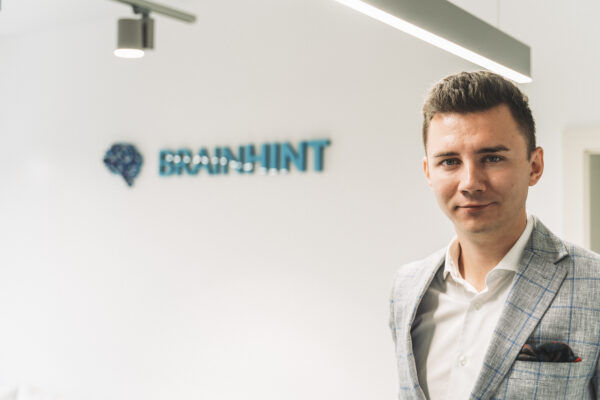
Traditional banking has never been the kindest to consumers. From queuing in line all day just to make a simple deposit or transaction to paying individually for each service such as withdrawals, currency conversions, and even payments, traditional banking has done a great job for a long time of squeezing consumer’s pockets to enrich their own. With a lack of a consumer-centric approach from traditional banks, it’s easy to see why fintech is the future. Who wouldn’t want a 100% transparent, 100% digital bank with a great user experience, easy access to funding, and all for a low monthly fee like we are used to with pretty much every other service we take part in?
At BRAINHINT, we no doubt want to be part of this future. That future is also closer than many realize as modern banking is filled with fintech solutions both in front-end and back-end processes. From checking your balance in an app to investing in the stock market with no prior experience in calculating taxes and other benefits, fintech has become synonymous with modern banking. Robo-investing, automated lending, multifaceted transactions, and many more fintech-based applications will become part of our normal instead of fringe technologies. Fintech is looking to replace more than just bank tellers.
To truly understand the increasing degree to which fintech is part of our future, we have selected five relevant facts:
- Worldwide, 64% of consumers engage with one or more fintech products (The Financial Brand)
- 48% of financial services companies have fully embedded fintech into their operating model (Global Fintech Report 2019)
- 81% of banking CEOs are concerned about the speed at which fintech technology is changing, more than any other threat that they face (PwC)
- 75% of survey respondents rate enhancing customer experience as the main strategic objective of fintech (KPMG)
- 28% of banking and payment businesses are at risk (PwC 2020)
With our expertise in AI and software development, we have been eager to be part of this shift towards fintech solutions and put our skills to use. In 2020 we got this chance and established a collaboration with a leading European fintech. Our collaborator is a rising star within the fintech world and is challenging the market head-on. Together with our client, we go beyond traditional fintech, a simple payment app or mobile wallet, by providing software that allows users to build an entire bank from scratch with just a click of a mouse.
In order to facilitate our client’s ambitions, we set out to build a low-code-no-code pan-European bank (lookout for our next blog entry on low-code-no-code). By employing artificial intelligence and behavioural science for AML/AF processes, as well as constructing smart contracts, we were able to make these ambitions a reality. After our success, we are looking forward to more collaborations in order to drive AI driven banking forward, all while putting the customer first. Who knew that in the future shifting from in-person bank tellers to AI would make banking more customer-centered?


